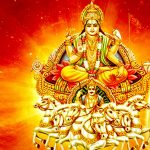Why is Lighting an Akhand Jyot During Navratri Believed to Attract Divine Energy?
Navratri is one of the most important Hindu festivals, dedicated to worshiping Maa Durga and her nine divine forms. During these nine days, devotees perform various rituals to invite positive energy, prosperity, and divine blessings into their homes. One of the most powerful and revered practices during Navratri is lighting an Akhand Jyot (eternal flame). But why is it believed that lighting this Jyot attracts divine energy? Let’s explore the spiritual, religious, and practical reasons.
Spiritual Significance During Navratri
In Hindu tradition, light symbolizes knowledge, purity, and the destruction of darkness. Lighting an Akhand Jyot during Navratri represents the presence of Maa Durga in the home. It is believed that the continuous flame creates a sanctified environment, wards off negative energies, and draws spiritual energy into the space. Devotees often place the Jyot near the Durga idol or the Navratri Kalash during puja.
Symbolism of the Eternal Flame
The flame of an Akhand Jyot represents unbroken devotion and faith. During the nine days of Navratri, keeping the Jyot burning continuously is a symbol of dedication to Maa Durga. It also signifies the triumph of good over evil, reflecting the victory of Maa Durga over the demon Mahishasura. The uninterrupted flame is considered a medium through which divine energy flows into the devotees’ lives, bringing peace, courage, and strength.
Psychological and Emotional Benefits
Beyond its spiritual significance, the Akhand Jyot during Navratri has practical and emotional benefits. The soft, steady light creates a calm and meditative atmosphere, helping devotees focus during prayers, mantra chanting, and meditation. Watching the flame enhances concentration, reduces stress, and strengthens the emotional connection with Maa Durga. This meditative effect amplifies the blessings received during the festival.
Role in Navratri Rituals
During Navratri, lighting the Akhand Jyot is often accompanied by chanting of the Durga Saptashati or other sacred mantras. Many families light the Jyot in front of the Kalash and perform daily pooja for nine days. On Ashtami and Navami, the Jyot is kept burning while performing Kanya Pujan, symbolizing Maa Durga’s presence and blessing. By the end of Navratri, the flame is considered a source of divine energy and spiritual protection for the household.
Lighting an Akhand Jyot during Navratri is not just a ritual—it is a powerful spiritual practice. It symbolizes light overcoming darkness, knowledge overcoming ignorance, and devotion overcoming worldly distractions. The eternal flame attracts divine energy, purifies the environment, and strengthens the devotees’ spiritual connection with Maa Durga. By keeping the Akhand Jyot burning for all nine nights of Navratri, devotees invite peace, prosperity, and the protective grace of the Goddess into their lives.
- Religion World Bureau









